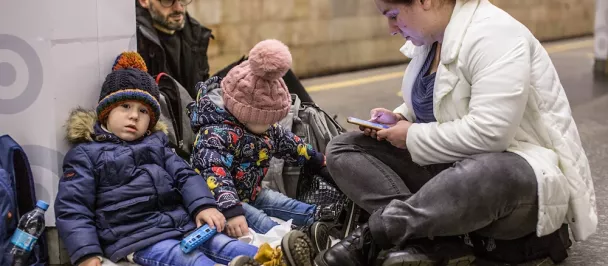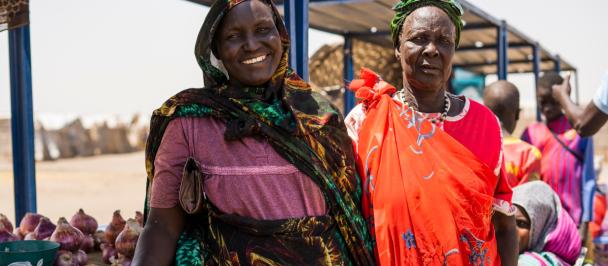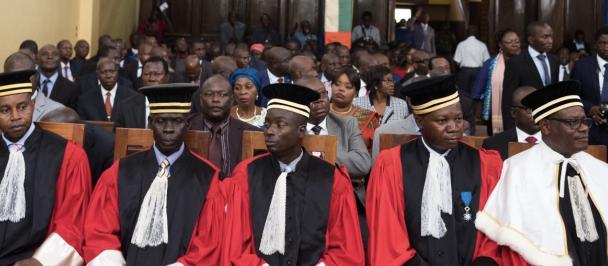The upcoming twelfth Global Forum for Migration and Development (GFMD) in Quito, Ecuador provides policy-makers and practitioners the opportunity to mingle and share ideas for effective partnerships and collective action to find integrated development solutions to migration challenges.
For the first time, the GFMD is offering one platform for civil society, business leaders and the Mayoral Forum together to explore complementarities of the two Global Compacts – one on Refugees (GCR) and the other for Safe, Orderly and Regular Migration (GCM) adopted in 2018, in line with commitments made in the New York Declaration for Refugees and Migrants.
With just 10 years to go, the Sustainable Development Goals (SDGs) Decade of Action calls for accelerating sustainable solutions to overcome inequality, poverty and climate crisis among others. Achieving the SDGs means addressing almost all the key objectives of the Global Compact for Migration.
Migrants represent 3.5 percent of the world's population but contribute nearly 10 percent of gross domestic product. Migrants are therefore central agents in this endeavour and should be engaged as such to transform our world.
What needs to happen? Here are three insights to make migration work for sustainable development:
1. Migration should be driven by choice - It is essential to address the negative drivers and structural factors that force people to leave their country, in unsafe often desperate and dangerous conditions. Violent conflict, lack of gainful employment opportunities and climate induced natural disasters have been seen as some of the major causes for migration. Rule of law, stronger and accountable state institutions, targeted climate actions, and promoting skills development are key elements to address this issue.
2. Integration of migrants in a safe, orderly and regular manner is socio-economically beneficial - Integrating immigrants in destination countries in a safe, orderly and regular manner for example, in education, health, transport and agriculture could add between US$800 billion to $1 trillion to the global economy every year. If managed well, international migration can be socially and culturally a productive experience for diverse communities, while reducing risks and vulnerabilities and protecting human rights.
3. Building capacity and connecting youth to skills and jobs in both the country of origin and destination can create new opportunities. Introducing new digital technologies can enable and empower youth to be competitive and globally connected. This helps them have better options and choices and minimizes the possibility of undertaking hazardous jobs as unskilled migrants. Diasporas can play an important role in leveraging migration’s benefits for development, transferring new skills and knowledge that is invaluable for development to their home country.
The achievement of the SDGs depends, more than ever, on the ability of local and regional governments to promote integrated, inclusive and sustainable development. Together with the International Organization for Migration (IOM), UNDP is supporting eleven countries—Bangladesh, Ecuador, Jamaica, Kyrgyzstan, Moldova, Morocco, Nepal, the Philippines, Serbia, Senegal and Tunisia, to continue to address the plight of migrants and their host communities by supporting national and local governments to mainstream migration into development plans.
In Belize, teaching youth life skills has helped solve practical problems that could be barriers to employment, for example, legal identification papers. In Tajikistan, with support from Japan, the Youth Innovation Centre is serving as a platform for 50,000 young people to network and exchange experiences.
Moldova with the support of Switzerland was successful in ensuring two-way dialogue through organizing the diaspora/migrants and local development programme where more than 10,000 migrants participated. To date more than 300,000 people benefit from better services in their villages and cities.
In Zambia, the Sustainable Resettlement Programme works with local government, UN agencies, civil society organizations and the private sector to implement activities that are needed to help displaced persons and their host communities shift from humanitarian assistance to more medium and long-term development initiatives. This has resulted in social, cultural and economic integration and cohesion for former refugees as new permanent residents, allowing greater freedom of movement and the opportunity to engage in income opportunities.
We need more evidence-based studies on migration. The landmark study Scaling Fences: Voices of Irregular Migrants from Africa to Europe gives voice to irregular migrants, and reveals strong links between migration and development.
There is a need to leverage the commitment and support to the Migration Multi-Partner Trust Fund — a collective endeavour of the UN system, Member States and other partners to achieve the SDGs, especially SDG target 10.7.
UNDP is committed to work with our partners, the IOM, the World Bank and other members in the UN Network on Migration, to provide meaningful contributions to safe, orderly and regular migration, where people are provided with choices. On this, the international community can count on us as a trusted partner.

 Locations
Locations



